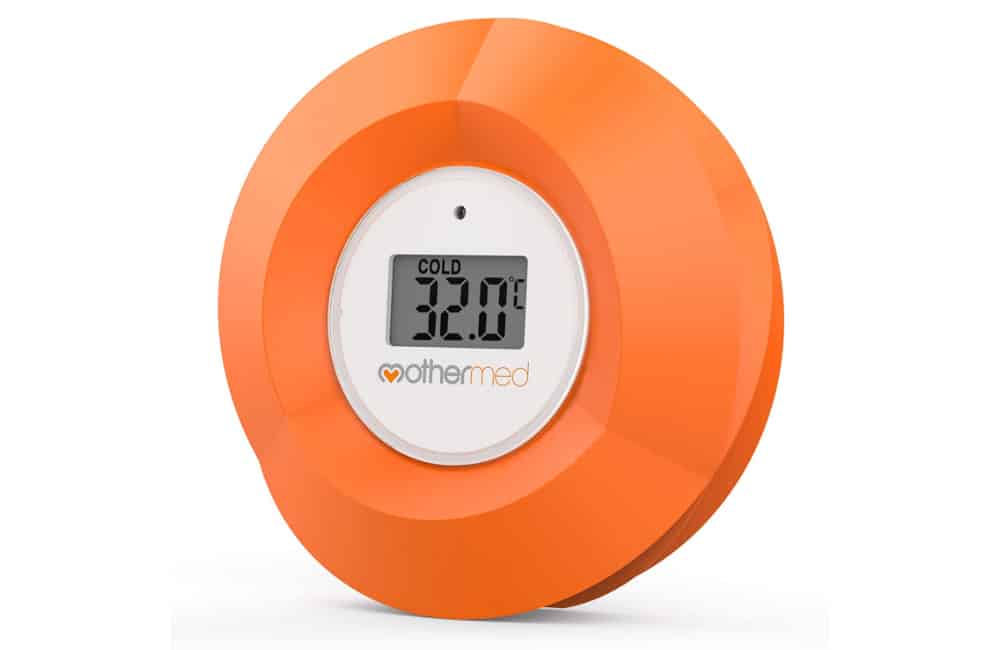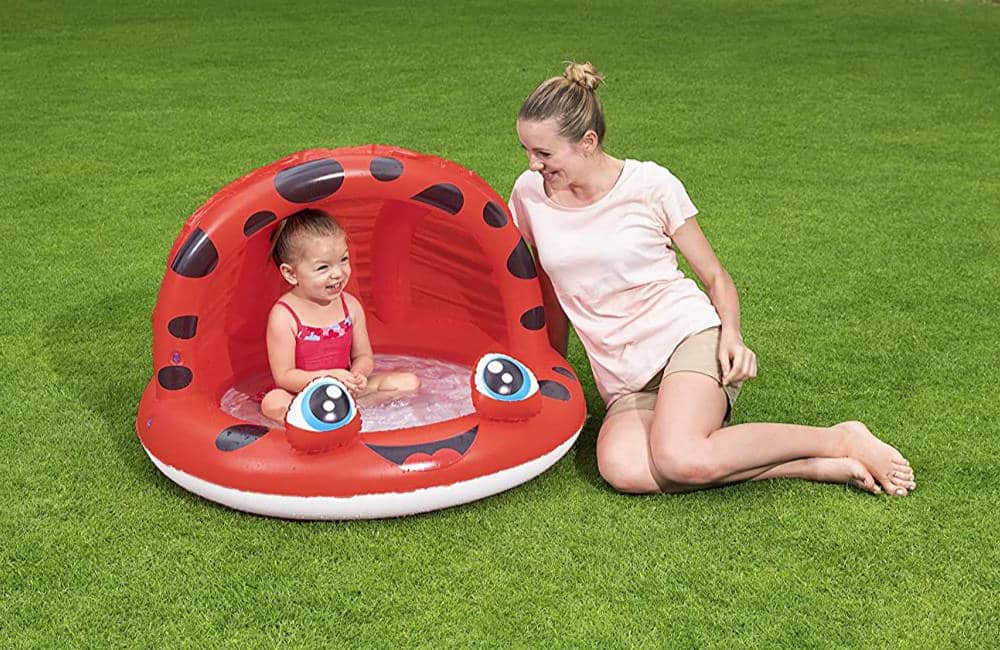Affiliate Disclosure: As an Amazon Associate, we earn from qualifying purchases.
Just as much as their older siblings and parents, babies enjoy splashing and playing around in a paddling pool.
Introducing your babies to water play and fun with family as early as possible is great. However, it goes without saying that babies should always be under the watchful eye of their parents.
Unlike toddlers and adults, babies can only swim in a paddling pool at a temperature perfect for their age but What temperature should a baby paddling pool be?
If your baby is under 12 weeks old the paddling pool temperature should be 32°C over this age it should be 30°C.
It’s not safe to submerge babies in very cold or hot water since these temperatures have consequences that could harm them.
The rest of this article discusses the ideal temperature of the water in a paddling pool for babies, the dangers that could occur if the temperature is too low, how to check the right temperature for them correctly, and how to warm the paddling pool up before placing your baby in it.
If you want to look at baby paddling pools take a look at some of the best in our online shop.
What Temperature Should a Baby Paddling Pool Be?
Babies unlike children and adults are unable to regulate their body temperatures. It is therefore really important to keep a close eye on the water temperature and also your baby.
You’ll find that their temperature is vulnerable to the surrounding environment and can fluctuate.
Before allowing your baby to play in a paddling pool, you should first check the water in it. It’ll be even chillier for your baby if it begins to feel cold to you.
As a minimum, a temperature of 32 degrees for infants younger than three months is recommended or a minimum temperature of 30 degrees for infants over this age. There are of course a number of different temperature ranges suggested for babies, but this represents the typical range.
One of the main things you need to look at is that water cools very quickly even on a hot day. You should therefore take great care to ensure that the temperature remains fairly constant by increasing the heat if it decreases substantially.
If you see that your infant is beginning to shiver while they are playing in the paddling pool, you must remove them from the water as soon as possible.
Always take extra precautions to ensure your child does not enter water too hot to swim in. Keep in mind that an infant’s skin is 20% to 30% thinner than the skin of an adult. As a result, it’s essential to ensure the water is not too hot or too cold for them.
What are the Dangers of Low Temperatures for Babies?
Like an adult’s, a baby’s temperature might change slightly depending on factors like the time of day, the baby’s level of activity, and the method used to measure the baby’s temperature.
Babies often have greater core body temperatures than grownups do. This is caused by the fact that babies have higher levels of metabolic activity and larger body-large surface area concerning their body weight.
In addition, babies tend to lose more water than adults via their skin, making them more sensitive to shifts in body temperature.
A case of hypothermia could develop in the child if exposed to water in a paddling pool that is too chilly for them. This is especially likely to occur if the infant is not dressed appropriately for the weather and is exposed to the elements or if the water temperature is not appropriate for them.
Decreased core body temperature is known as hypothermia. Premature death can occur from a low body temperature in infants so it is important to monitor the water temperature.
How to Check the Temperature of a Baby Paddling Pool
The best way to test the water temperature for a baby paddling pool is by using a pool thermometer.
A pool thermometer can determine whether or not it’s safe to submerge your baby in the paddling pool.
If you do not have a thermometer for the pool on hand, you may want to measure the pool’s temperature using your hand or elbow as you would with a bath.
Even though the palm of your hand should be sufficient, “elbow test” culture is nevertheless prevalent in some communities. In either case, it’s essential to feel the temperature of the water on your skin to determine if it’s too warm or too cold.
However, this is clearly not very accurate and we would always suggest you use a thermometer. Never put your baby in the water if you have any doubts about the temperature.
There are a variety of different thermometers on the market which include both manually read and digital thermometers. However, you will need to check the length of the thermometer as generally, baby paddling pools have less water in them.

One of the best-selling models currently is the MotherMed bath thermometer.
How to Warm Paddling Pool Water
If you’d like your baby to enjoy the water in a paddling pool, you can warm it up in various ways. We’ve written a full article o the topic of How to Heat a Paddling Pool? but some of the basic ways are listed below.
Cover it with bin bags
Wrapping a paddling pool with bin bags is the quickest way to warm the water. The unusual home necessity should be submerged in the pool for 45 minutes. The material immediately heats the water, and the heat it retains in the sun for the remainder of the day.
Adding warm water to the paddling pool
One of the easiest and most obvious ways to heat a paddling pool is to add warm water. But this is not as easy as it might seem at first.
Most people can only use an outdoor tap with cold water so you can always fill it part way with cold water and then add hot water from a kettle.
Failing that you could connect a hose to your tap in the kitchen or bathroom.
Make use of a pool heater
Pool heaters are a great way to ensure the water is warm for your baby to swim in. It takes water out of the pool and puts it in the tank that heats the water.
From there, it sends back to the pool in warmer water. If you’re worried, this should keep the water level in the pool at a safe level for you and your baby.
Conclusion
If you want to ensure that your child is safe while swimming in a paddling pool with you, it’s important to check the temperature of the water before you get in.
Make sure you always check the temperature and monitor it whilst your baby is playing. If the water cools down too much simply take your child out of the pool and top it up with warm water. Check the temperature again and allow baby back in to play and have fun!
Don’t forget if you haven’t bought a baby paddling pool yet you can find a whole range in our online shop.

